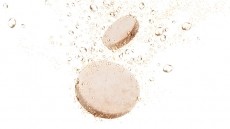Hot drinks play Cinderella as soft drinks drive innovation, Euromonitor
Richard Haffner, head of beverages research at the research firm, said in a company podcast that soft drinks grew in value terms by around $130bn between 2005-2010, while hot drinks only grew by a quarter of that amount.
This is despite that over the past 5 years on a global basis the nominal value of soft and hot drinks grew at around the same rate of 7% for each.
Increased profitability within soft and hot drinks meant clear differences in regard to new product development (NPD) said Haffner.
“What tends to happen for hot drinks is the NPD there focuses more closely on existing products in terms of packaging innovations to make preparation more convenient,” he said.
Hitting the home run
Conversely, soft drinks tended to be more experimental, Haffner said, with new forms of products emerging such as soft drinks with added dairy ingredients.
“Soft drink are going for more of the home run driven by higher profitability,” Haffner said.
Within developed markets, many product categories within non-alcoholic beverages were well-established and highly competitive, Haffner said.
So firms needed to introduce “very innovative” products that combined 2 different product categories or even create a new one, he added, citing the arrival of energy drinks within the last 10 years.
Haffner said that ageing western populations also meant innovation in products with an older age appeal, or NPD that at least appealed across age demographics.
For instance, functional bottled waters with glucosamine or other additives, with noted benefits for joint health, appealed to older consumers, Haffner said, with products advertised as containing these ingredients without making specific health claims.
Thus manufacturers relied upon common awareness of additive activity to encourage sales, he added.
Meanwhile, in developing markets, successful NPD involed an appeal to a younger population, Haffner said. He added that categories were less well-established and easier to find a place within, while tastes differed.
Market success differs
Haffner used the example of Coke's Minute Maid Pulpy, which he said was highly successful following its Asian launch because it contained orange bits, and was thus perceived as healthy despite only containing around 24 per cent juice.
But while the product appealed to younger people, at a favourable price due to its lower juice content, consumers in developed markets may not like such a product due to the interest in products with 100 per cent juice, Haffner added.
Health clims also varied widely across markets, Haffner explained, drawing a distinction between a tougher regulatory environment in the US and western Europe – where specific claims needed scientific support – and developing nations with more relaxed rules.
In Asia especially there were many specific claims regarding improved joint health, beautiful skin and inner health linked to specific ingredients in new products, Haffner said.
“But in western Europe and the US, those kind of claims couldn’t be made without some rather rigorous scientific testing that manufacturers tend not to undertake,” he added.













